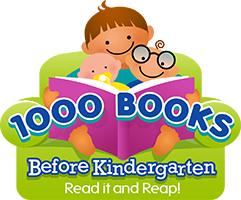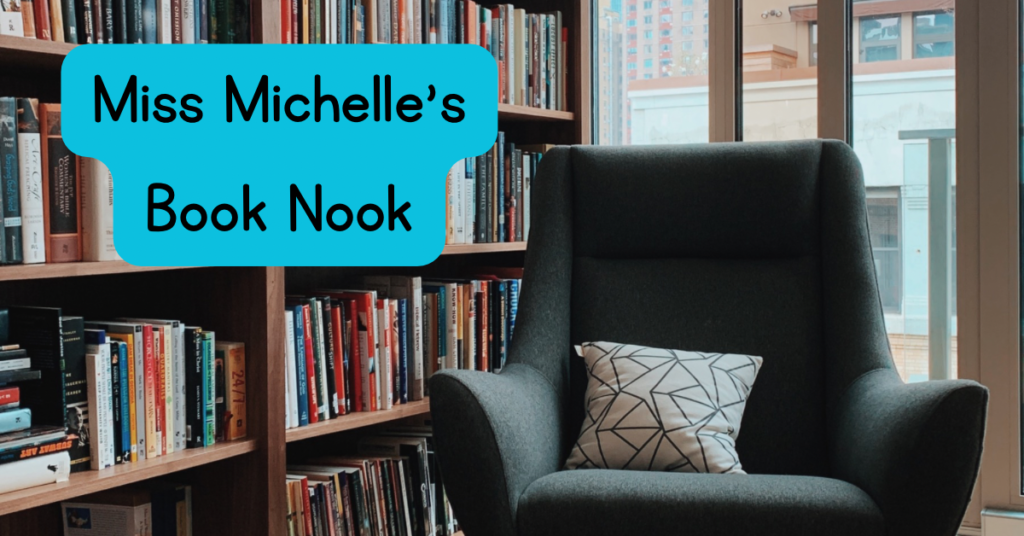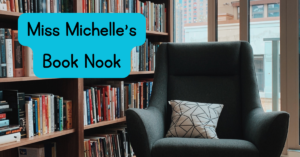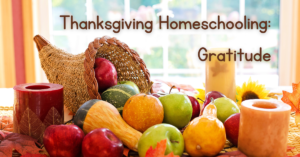As my son and my niece, Kristen’s daughter, are starting Kindergarten, I think it’s about time we talk about 1000 Books Before Kindergarten. Your library may have a program, but you don’t have to participate in a formal program to reap the benefits. In fact, it’s perfect for Homeschooling families because you can do it your own way. So this post will not have any book recommendations like I usually do, but I will share information and some helpful tips for you to implement this in your own homeschool.
Why Read 1000 Books Before Kindergarten?
Of course, this is the biggest question I get from patrons when I ask if they are participating in the program. The short answer is that the more words a child is exposed to, the easier it is to learn how to read. Talking and singing to babies help with language acquisition and development. Reading books (and lists and recipes and street signs, and on and on) helps with literacy. There is no hard and fast rule, but someone decided that 1000 books before kindergarten has a nice ring to it. If you read one book a night, you can do 1000 books in under 3 years. If you read three books a night, you can do it in under a year.
Miss Michelle, Did You Really Read 1000 Books with Your Kids?
I’ll be honest. I’m a children’s librarian and I have a lot of picture books at my house, and an endless supply of picture books at work. I did not officially do the program and track books with my kids… but that’s only because I know that hitting the 1000 book goal wouldn’t be hard for me. My kids probably had more like 5000 books before kindergarten. If I wasn’t a librarian and if I wasn’t so big on reading to my kids, I would have seen the benefit of keeping track. I did sort of track it for a while for Charlotte, but more often I would just put a bunch of checkmarks on her log without actually counting.
How Will We Ever Reach 1000 Books if My Child Has a Favorite?
You don’t have to count 1000 different titles. Every time you read that bedtime favorite, you can count it again. If you read The Very Hungry Caterpillar three times in a row, that’s three books. In fact, you don’t even have to write titles. Maybe, as I mentioned above, you just put checkmarks, or tally marks. I also get creative on what I consider a “book” for this program. Charlotte used to love watching YouTube videos where people read picture books to her. (Our favorite channel is Storytime with Ryan & Craig.) Usually the video shows a person reading a picture book and showing all of the pictures. How is that different from a parent (or grandparent or babysitter or librarian) reading to a child? In my opinion, it’s not. If your child is engaged in watching and listening to the video, that counts. I would also count toddler magazines – Char’s Nana had bought her a subscription to a toddler magazine (Nat Geo Little Kids maybe?) and when we read it cover to cover, I would count that.
How Do I Keep Track?
This is the part where your creativity can come in. You can make an Excel spreadsheet if you want to track the titles and authors. Or you can find or make a sheet with 100 circles and print 10 copies, putting a check for each book. Or maybe you want to get cute little stickers and your child can put a sticker for each book read. Find what works for you, and stick with it. If you want to check with your local library, they might have a tracking system you like. Maybe they use a popular app like Beanstack. Maybe they have printed reading logs for you. They might have little prizes along the way, or they might have a big prize for completing the program. Or you can choose to do it on your own and come up with your own prizes for your child. You could throw a little party with family and friends to celebrate reaching 1000 books, or you could go to the playground.

Okay, but What Does Kristen Have to Say about This?
Hi there! Kristen here. I absolutely love that Michelle chose to share about this program. As she noted above, 1000 Books Before Kindergarten has a website. It’s another great resource for parents who want to do this program. There are program instructions and reading logs (though I agree with Michelle that you can create your own method of tracking). They also have certificates that you can print for your child to share their progress and completion of the program. If you prefer a formal program to follow, check out the site to find participating libraries in the US, Canada, and the US Virgin Islands.
Our local libraries have changed it up a bit. The program is intended for kids ages 3-6, but it can be completed into elementary school. Instead of choosing your own books, they have 100 bags of 10 books each. When you sign up for the program, they have a sheet filled with 100 labeled boxes and you cross them out as you read the books in each bag. They also partner with the local school district and will award kids with a shirt and recognition at a board meeting when they complete the program. I really like that they have the books in ready-made bags. My children have been exposed to books that we likely wouldn’t have chosen on our own, and they vary from picture books, to short, primary chapter books, and include fiction and non-fiction. Plus, some of the books are older and look dated, but are filled with great information – our library tracks when books are borrowed and will replace any that aren’t checked out over a certain period of time. The books in the bags are saved from that process as they are borrowed by anyone trying to complete the project.
Although I like the ready-made bags and see the noted benefits, I can also say that I like the idea of choosing your own books. If your child has a favorite subject (i.e. dinosaurs or unicorns), it’s much easier to expose them to 1000 books when they’re interested in the material. The ready-made bags may include topics that are too sensitive for your children at the time you’re reading (i.e. adopting a puppy when your dog just died), or ones that you may not feel comfortable reading (spiders… ewwwww). I would prefer to have an option of a combination of both ideas. We could use the ready-made bags of books, but supplement with our favorite books at home. We might not have 1000 children’s books at home, but we easily have several hundred—we’re a book family—and I really don’t understand why reading books from our stash shouldn’t count towards the 1000 books in the project.
Overall, I think 1000 Books Before Kindergarten is a great program, whether the goal is to complete before Kindergarten or just to complete when you can. I think one of the best benefits is that it promotes a love of words in children. They are exposed to new ideas and it ensures that they are hearing words at a level they can understand. There is also the added benefit of learning new words that they can understand through contextual clues or by asking their parents to explain what they mean. We’re slowly but surely making our way through the program, and I look forward to the excitement when we complete it!
Check out Miss Michelle’s Book Nook
Miss Michelle shares her book recommendations each month on the In Our Homeschool blog. Find links to all of her posts here.
Miss Michelle is the sister of Kristen, who writes this blog. She has a daughter who is 9 and a son who is 5. They are not home-schooled, but Miss Michelle is super supportive and proud of her sister for doing it. She has been a full-time Children’s Librarian for over 16 years and loves to recommend her favorite books. You can follow her on Goodreads, where she keeps track of books she has read for storytime, at https://www.goodreads.com/user/show/170007385-miss-michelle.

Disclosure: As an Amazon Associate I earn from qualifying purchases. This post may include affiliate links which means I may earn commissions for purchases made while using my link.




This Post Has One Comment
Pingback: Things Homeschoolers Can Do at the Library - In Our Homeschool